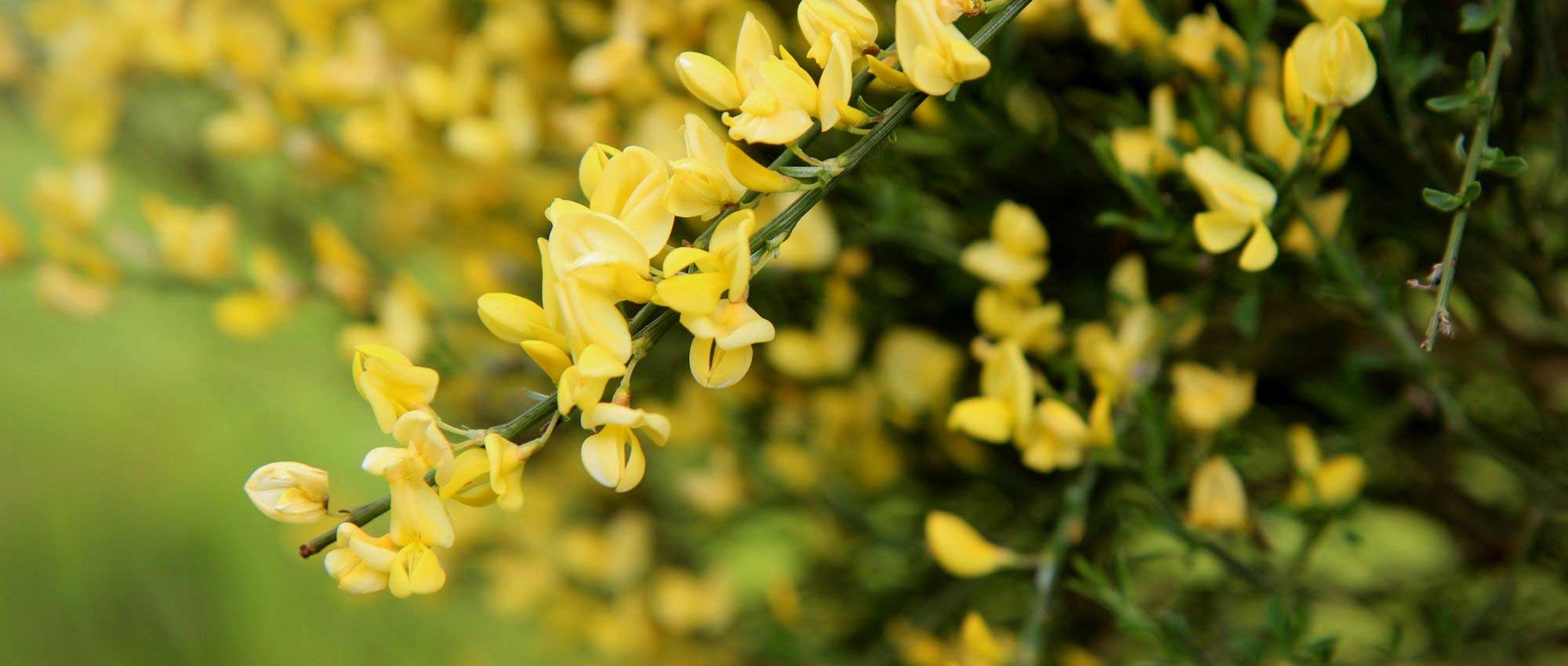
12 bushes for dry or free-draining soil
Our selection of suitable bushes
Contents
Some areas are dry and free‑draining, which means that water and mineral elements penetrate the soil very quickly and are scarcely available to plants. These are generally sandy or stony soils. If you garden on this type of ground, it is important to choose suitable plants that can tolerate drought and will not require frequent watering.
Here is a selection of 12 bushes suitable for dry, free‑draining soils, which do not need much water or mineral nutrients and will therefore demand little attention. Some of them are perfect for forming a hedge, while others can be placed at the back of a border, where they will provide a lovely backdrop. Others will find their place at the rear of a rockery, where they will add height. Feel free to pair them with other perennials that thrive in dry, well‑draining ground. For more information on gardening on this type of ground, you can also consult our sheet “Gardening in dry, free‑draining soil: all our tips!” Discover also our selection of evergreen bushes for dry soil.
Rockrose
Cistus is a Mediterranean bush well adapted to dry, rocky soils and produces a very attractive flowering display. Its flowers are rounded, formed of five broad petals with a silky appearance. They are generally white or pink, marked with darker spots towards the centre of the flower. They are very short-lived but are continually renewed. They are also melliferous, attracting pollinators. Cistus leaves can be green or silvery, depending on variety. There are also Cistus with variegated leaves, such as Cistus corbariensis ‘Rospico’.
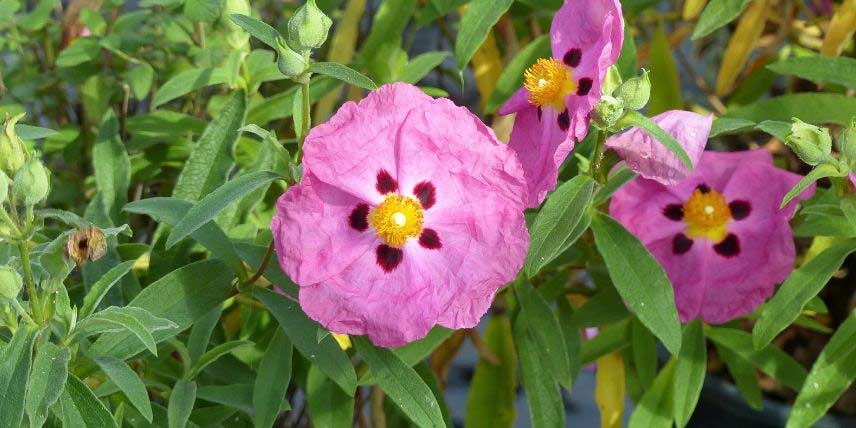
Cistus purpureus
→ To find out more, see the factsheet: “Cistus, Cistus: planting, pruning, maintenance”
Oleander
Oleander, Nerium oleander, is a superb bush that offers impressive flowers, generally pink, sometimes white, red or even yellow. Flowers are formed of five broad lobes, extended into a tube. There are even double-flowered varieties! Oleander is also valued for its decorative, evergreen foliage, which persists through winter. It is a must in Mediterranean-style gardens. It tolerates sea spray and will thrive in a seaside garden. You can grow it as a specimen, or use it to create a hedge.
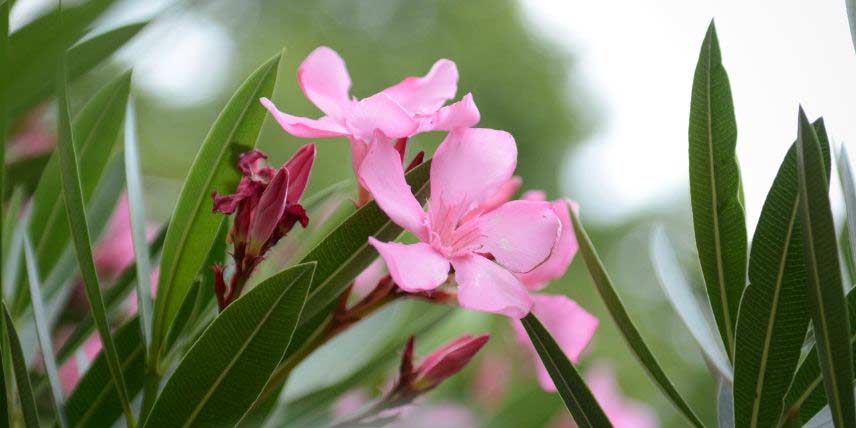
→ For everything you need to know, see our factsheet “Oleander: Planting, pruning and maintaining”
Eleagnus
Elaeagnus, or Chalef, is a bush that is bushy and dense, with decorative foliage. It is perfect for hedging, and makes an effective windbreak in seaside gardens, especially as it is resistant to sea spray. We recommend Elaeagnus x ebbingei, which bears beautiful lanceolate, thick, leathery leaves. Those of the type species are silvery-green, but there are many varieties with variegated leaves. Eleagnus is an easy, undemanding plant that will require little maintenance once established. In addition, it tolerates pruning very well.
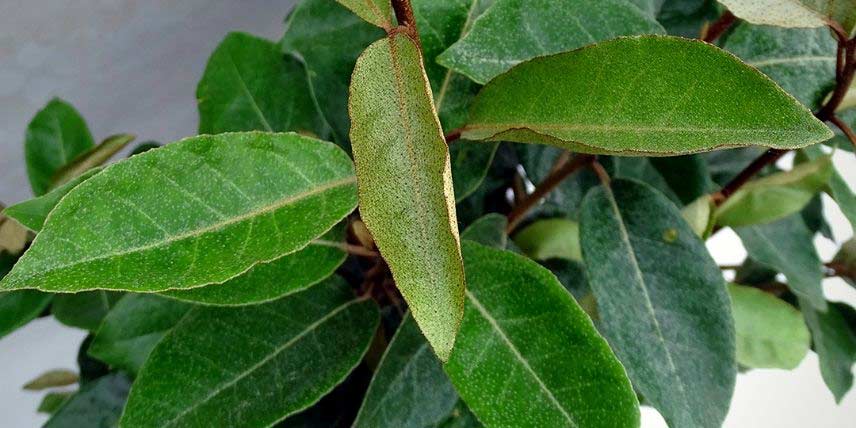
Elaeagnus x ebbingei
→ To learn more, see our fact sheet “Elaeagnus, Chalef: planting, pruning, maintenance”
Buddleia
Nicknamed butterfly bush, buddleia offers a fragrant flowering, rich in nectar, that attracts butterflies. It bears long conical inflorescences throughout summer in shades often of blue, mauve, pink or white. It also has elongated leaves of grey-green colour. Buddleia grows easily even in poor, infertile soil. It tolerates pollution well and is suited to urban gardens. It does not require much maintenance but needs severe pruning at end of winter.
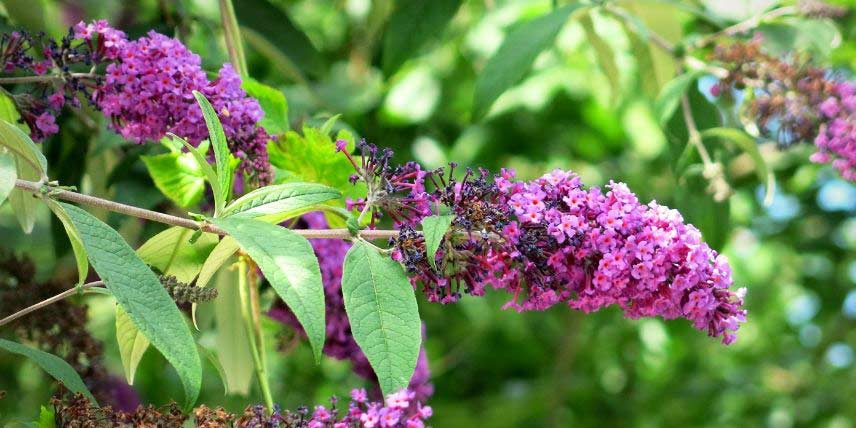
→ Discover our guide “Buddleia or butterfly bush: Planting, pruning and care”
Caesalpinia gilliesii
Very distinctive bush, Caesalpinia gilliesii offers spectacular summer flowering in warm hues. Its inflorescences consist of yellow flowers bearing long red stamens. Flowers are followed by flattened pods containing seeds. It also has large, attractive leaves, finely divided into numerous small leaflets. It can reach up to three metres in height. Despite its exotic appearance, this bush is relatively hardy, capable of withstanding -10 °C when grown in well-drained soil.
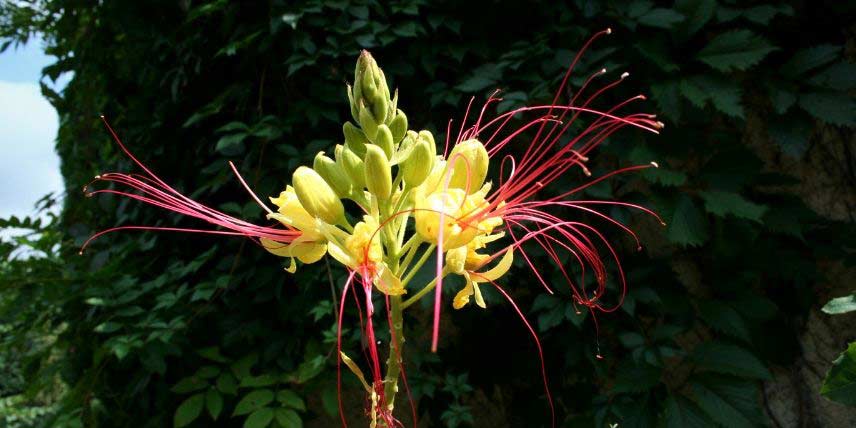
Caesalpinia gilliesii (photo R. Benezet)
Ceanothus
Ceanothus, sometimes called “California lilac”, charms with its beautiful blue inflorescences. It offers abundant flowering, which can be spring or summer, depending on varieties. Similarly, some Ceanothus are evergreen, keeping their foliage in winter, while others are deciduous. Their foliage is often dark green and glossy. They require little maintenance and are rather easy to grow. Some varieties are notable for cream or pink flowering.
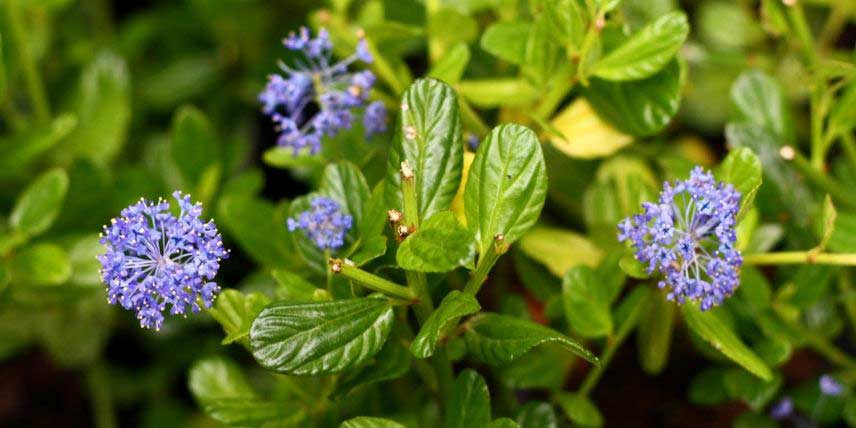
Ceanothus impressus ‘Victoria’ (photo V. Ben Rushbrooke)
→ Discover our fact sheet “Ceanothus: planting, maintenance, pruning”
Teucrium fruticans
Germander is a small evergreen, aromatic bush with silvery foliage and blue flowers. They have an irregular shape, divided into two lips, as in other plants of family Lamiaceae (sage, dead-nettle, Nepeta…). It can form low hedges and tolerates pruning well, even allowing use in topiary. Germander adapts easily to soils poor in organic matter. It is ideal for seaside gardens and easily helps recreate a Mediterranean atmosphere alongside other characteristic plants such as lavender, oleander, cistus, myrtle… The variety ‘Azureum’ is particularly appreciated for its rich blue flowering.
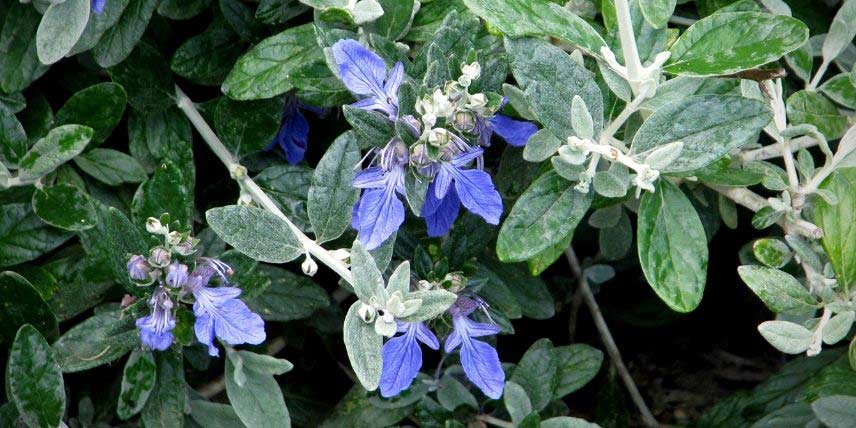
Teucrium fruticans ‘Azureum’ (photo Peganum)
→ To learn more: Teucrium, Germander: planting, care.
Broom
Broom is a compact, ramified bush, impressive for its abundant spring flowering, made up of numerous flowers in bright yellow. There are different species, but the Scotch broom (Cytisus scoparius) is one of most interesting to grow. It bears long, thin, angular shoots, very spreading, which carry the flowers, generally yellow, although there are also varieties with orange, red, purple or white flowers… Broom thrives in full sun and tolerates drought very well. It also has advantage of being fully hardy.
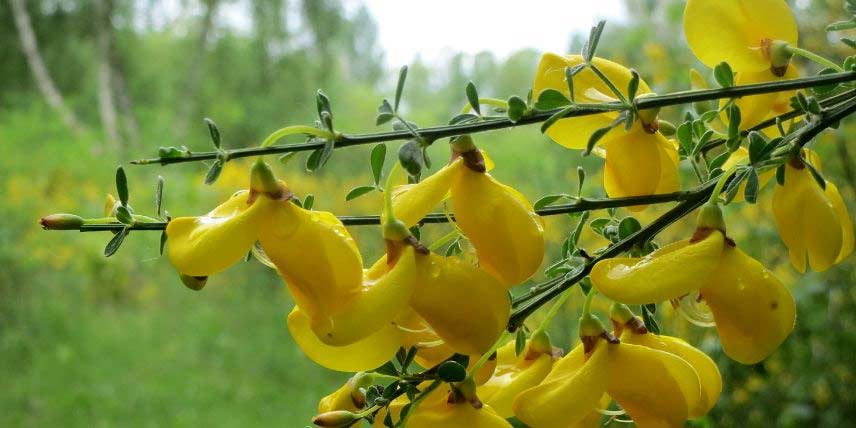
Broom, Cytisus scoparius
→ For full details, see our sheet “Broom, Cytisus: planting, pruning, maintenance”
Coronilla
Coronilla is a compact, dense bush that offers a generous display of vivid yellow flowering. It is valued both for the lightness of its foliage and the brightness brought by its flowering. In spring it bears a multitude of yellow flowers, much appreciated by pollinating insects. Its foliage is divided into small green leaflets that are more or less elongated. Discover the glaucous coronilla, distinguished by leaves with bluish tints. Undemanding, coronilla easily tolerates poor, dry soils.
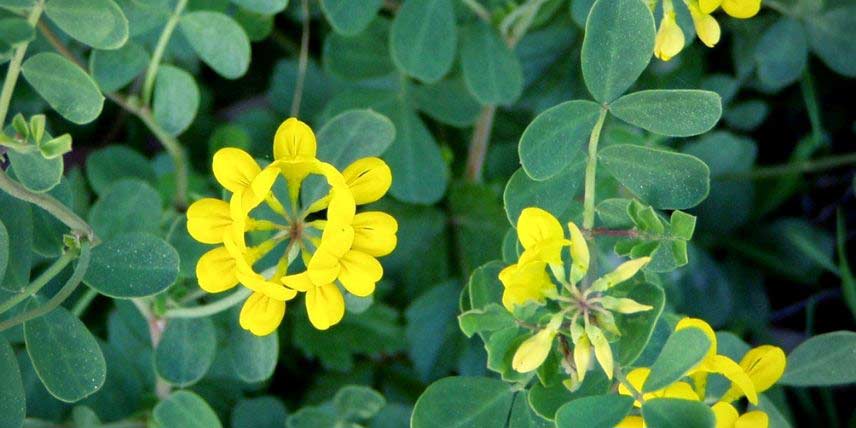
Coronilla valentina ‘Glauca’ (photo Júlio Reis)
→ For more information, see our full page: Coronilla: planting, cultivation and care.
Tamarisk
Tamarisk is a bush that offers a light, airy flowering in a soft pink colour. Depending on variety, it may flower in spring or summer. Its flowers are small and very numerous, covering branches with their lovely pink hue. Tamarisk can reach up to 5 m in height, and has a slightly weeping habit. It is easy to grow, quite hardy (able to withstand −20 °C), and shows resistance to sea spray. It will fit easily into a seaside garden. You can plant it either as a windbreak hedge or as a specimen.
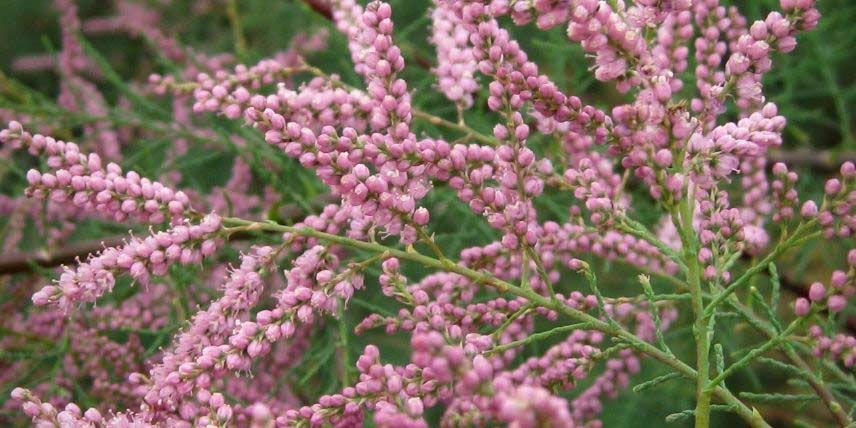
→ For everything you need to know about Tamarisk, discover our fact sheet “Tamarisk: Planting, pruning and care”
Sea buckthorn
Sea buckthorn, or Hippophae rhamnoides, is a spiny bush that bears very thin, narrow leaves, somewhat resembling those of the willow. They are green above and silvery beneath. But sea buckthorn is prized above all for its very decorative orange berries. They are edible, very rich in vitamin C, and have medicinal properties. They can be used to make jams or jellies. Sea buckthorn is a very hardy bush that copes well with dry, poor soils.
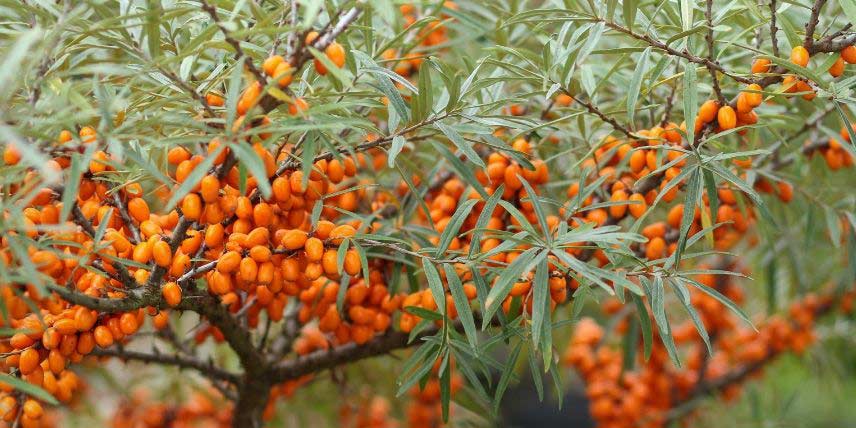
Hippophae rhamnoides (photo Maja Dumat)
→ For full details, discover our fact sheet “Sea buckthorn: planting, cultivation and care”
Amorpha canescens
Amorpha canescens, also called False Indigo, is a small bush still not widely cultivated. It nevertheless offers attractive, deeply divided foliage, divided into many leaflets, and flowers in summer, producing long spikes of small violet flowers. Its foliage is deciduous and disappears in autumn to emerge again in spring. Amorpha canescens has a fairly broad, spreading habit. It is ideal on a dry bank or in a rockery. It will also find a place in a naturalistic or cottage-style garden. Moreover, it has good hardiness, able to withstand −20 °C.
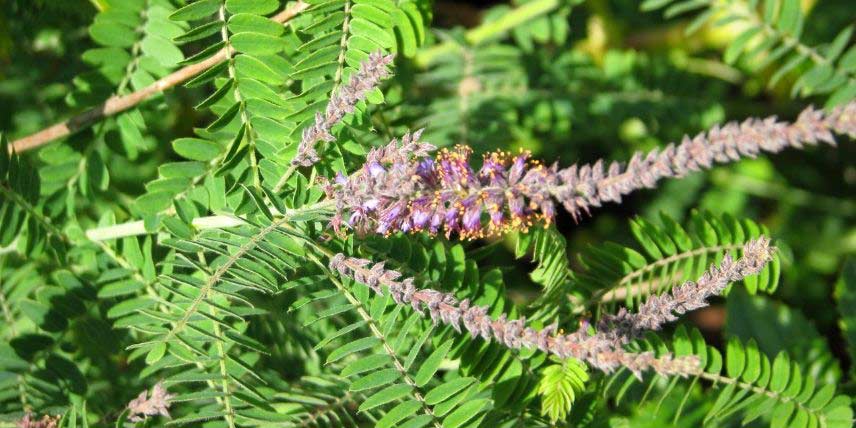
Amorpha canescens (photo Peganum)
- Subscribe!
- Contents
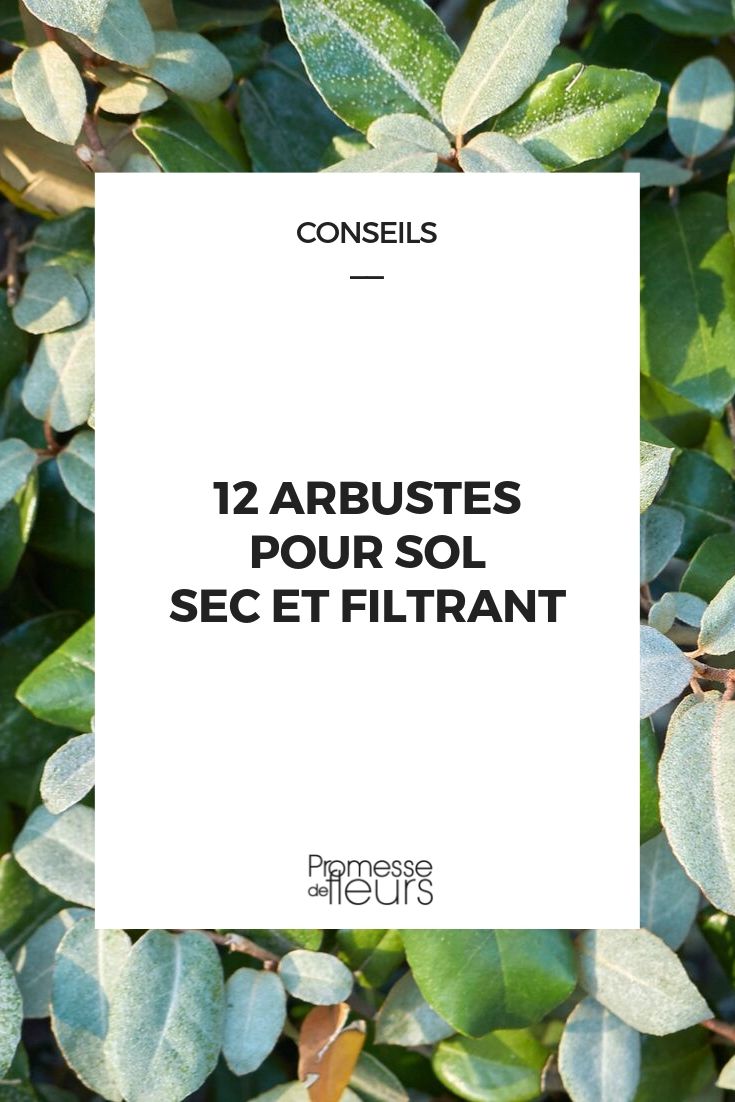































Comments